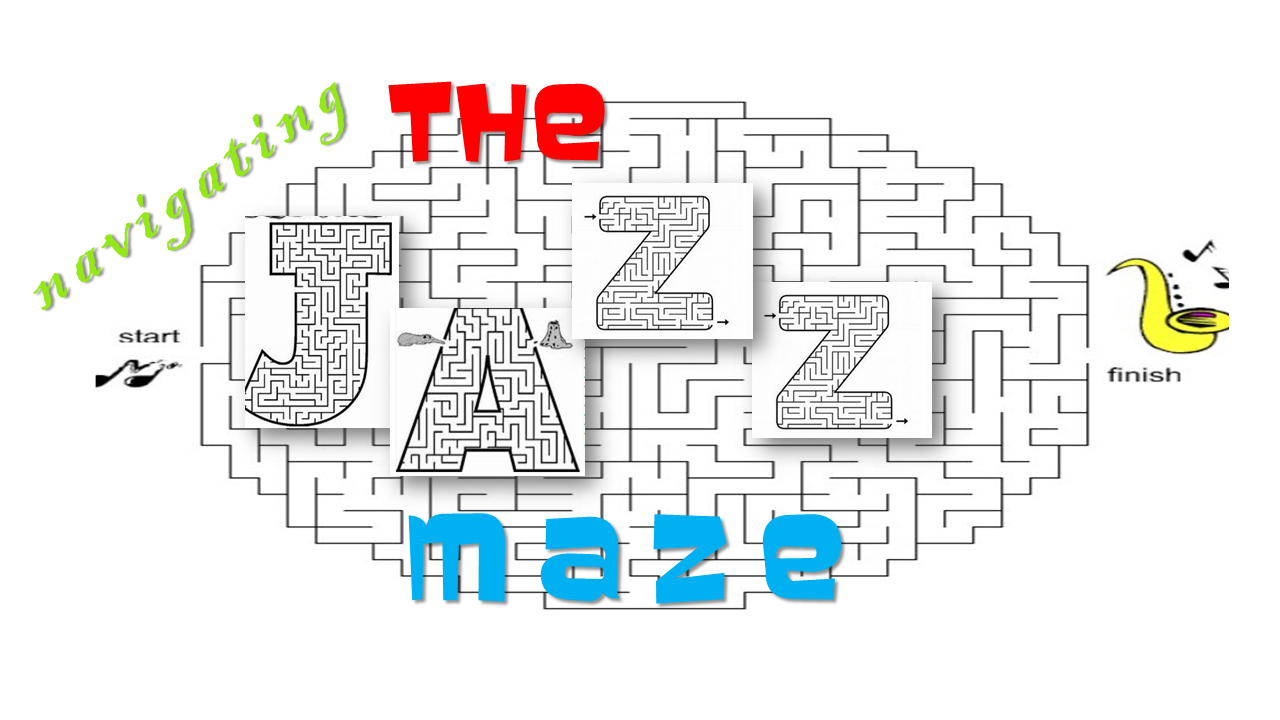You can Learn to Improvise at the Dungeness Creative Music Workshop, Wednesday Afternoons from April 3-June 5, 12:30-2:30 PM. Register Today. Tuition is only $150 for this 20 hour workshop. Email craig@craigbuhler.com or check out this video for details.
Tag: jazz licks
A Harmonic Minor Workout
 Pianist Dr. J. H. asked for a melodious exercise he could use to explore the harmonic minor scale in all 12 keys. The “harmonic minor scale” features the natural 6th degree FA along with the raised 7th degree. The raised 7th degree in a minor scale is the syllable known as “si” (pronounced “SEE”). It’s also referred to as “#SO” or “#7.” That scale is shown here:
Pianist Dr. J. H. asked for a melodious exercise he could use to explore the harmonic minor scale in all 12 keys. The “harmonic minor scale” features the natural 6th degree FA along with the raised 7th degree. The raised 7th degree in a minor scale is the syllable known as “si” (pronounced “SEE”). It’s also referred to as “#SO” or “#7.” That scale is shown here:
I Dig This One !
 Does improvising bring you joy? If you’re playing music you love, both you and your audience will be swept up in that transcendent joy. Here’s a topsy-turvy, tangled up, spaghetti-shaped, four-bar phrase that just tickles my spirit every time I play it. Hope you dig it too. Click here to watch the video.
Does improvising bring you joy? If you’re playing music you love, both you and your audience will be swept up in that transcendent joy. Here’s a topsy-turvy, tangled up, spaghetti-shaped, four-bar phrase that just tickles my spirit every time I play it. Hope you dig it too. Click here to watch the video.
Fresh Out of Ideas
Tenor saxophonist Brooklyn brought a favorite tune to his lesson. As always, we typed the changes into Band in a Box, chose a tempo and a groove, and started blowing on the tune. But Brooklyn said he was having trouble coming up with fresh ideas to play over the changes.
Another Blues Scale
Click here to watch the video.
The blues idiom offered early twentieth century musicians a new way to share deep emotional feelings vigorously and honestly.
A hundred thirty years earlier, Mozart had reveled in the fresh, airy lightness of the major tonality which superseded stolid Renaissance modal forms around 1600.
Periodic innovations like these keep music vibrant and invigorating. Unfortunately, too many of today’s musicians bloat their playing with endless, unimaginative, repetitive blues licks. Sure, blues licks can add a funky edge, but overuse of these clichés leads to tiresome monotony.
(And so on, and so on….Well, you get the idea!)
Rhythm 2: Express Yourself!
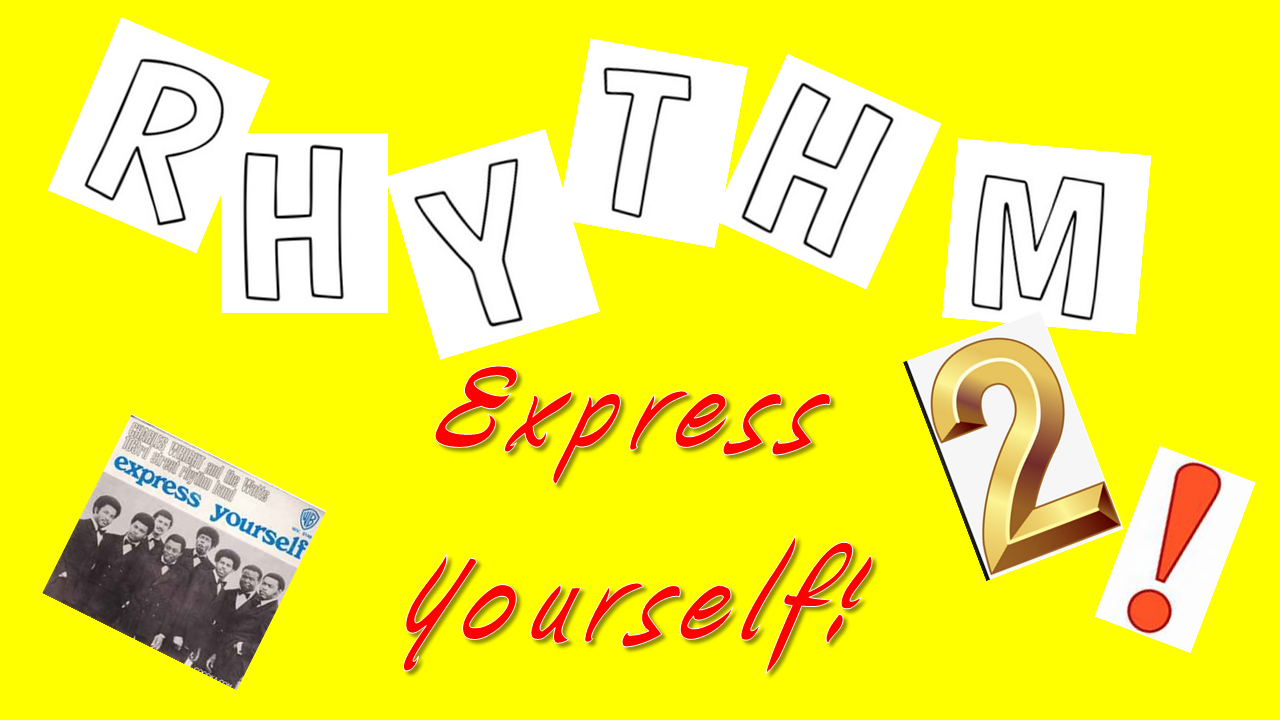
Swinging rhythms are the foundation and heartbeat of great jazz. Our first “Rhythm” video was a primer on how to play jazz rhythms. Click here to watch it.
In this video, we’ll talk about how you can use rhythm to effectively express yourself: your thoughts, your feelings, your personality, your unique story.
Rhythm in Your Bones!
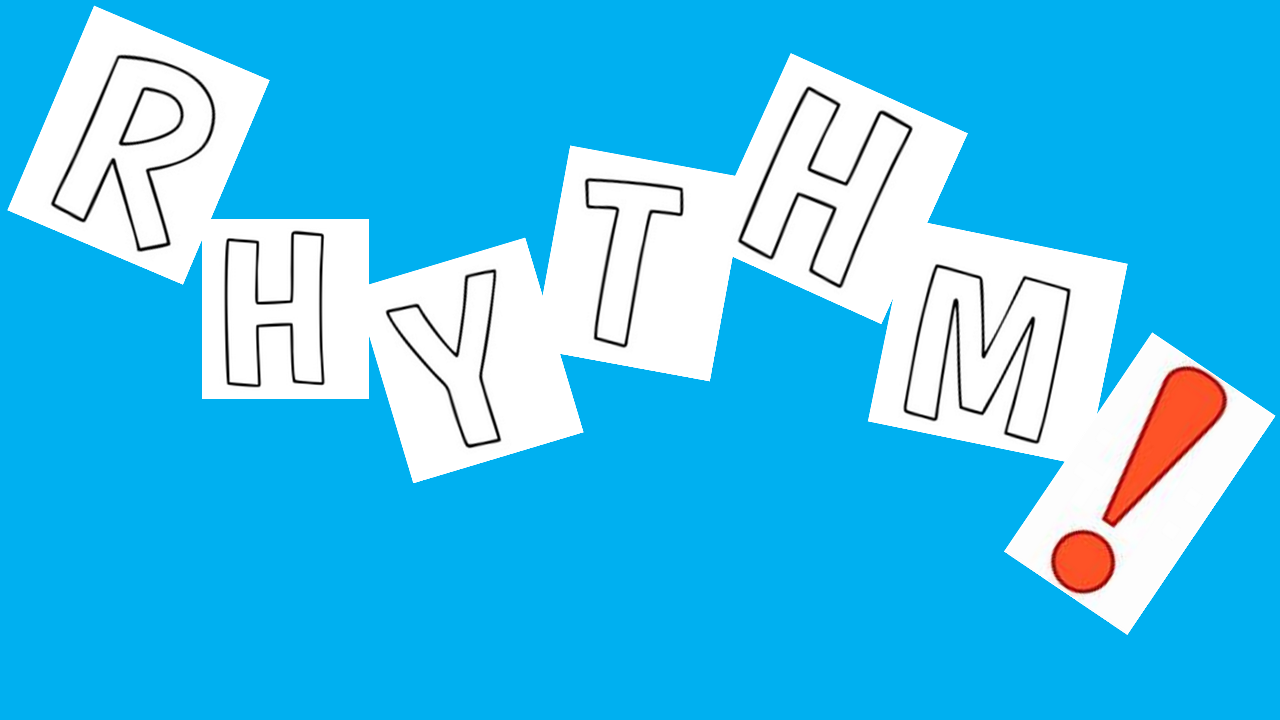 If you (or your students) struggle with playing swinging jazz rhythm, this video will go a long way toward gearing up those important rhythm chops. CLICK HERE TO WATCH THE RHYTHM VIDEO.
If you (or your students) struggle with playing swinging jazz rhythm, this video will go a long way toward gearing up those important rhythm chops. CLICK HERE TO WATCH THE RHYTHM VIDEO.
I feel so much more like I do now than I did when I first got here.*
Jazz gigs seldom turn out exactly as we expect them to. Since jazz is, by definition, an improvised art, this should come as no surprise. It’s a maze which often thrills, sometimes shatters, and continually amazes us.
Let’s say, for example, that you arrive at the gig late, stressed, un-showered, and unready to perform. It’s at this point that a fan drops a hundred dollar bill in the tip jar, Herbie Hancock asks to sit in, and your first solo provokes a standing ovation. In your dreams, right?
The nature of jazz will, at times, lead to the unexpected, to exciting innovation, to surprise, to joyful discovery. …Occasionally, it leads nowhere. After all, life’s mazes do include blind alleys. Just the same, we “press on regardless” (as my father often preached on rainy hikes), in search of the perfect note, aye? Continue reading “I feel so much more like I do now than I did when I first got here.*”
Chromatic Cro-Magnum P.I. (Practice Improv)
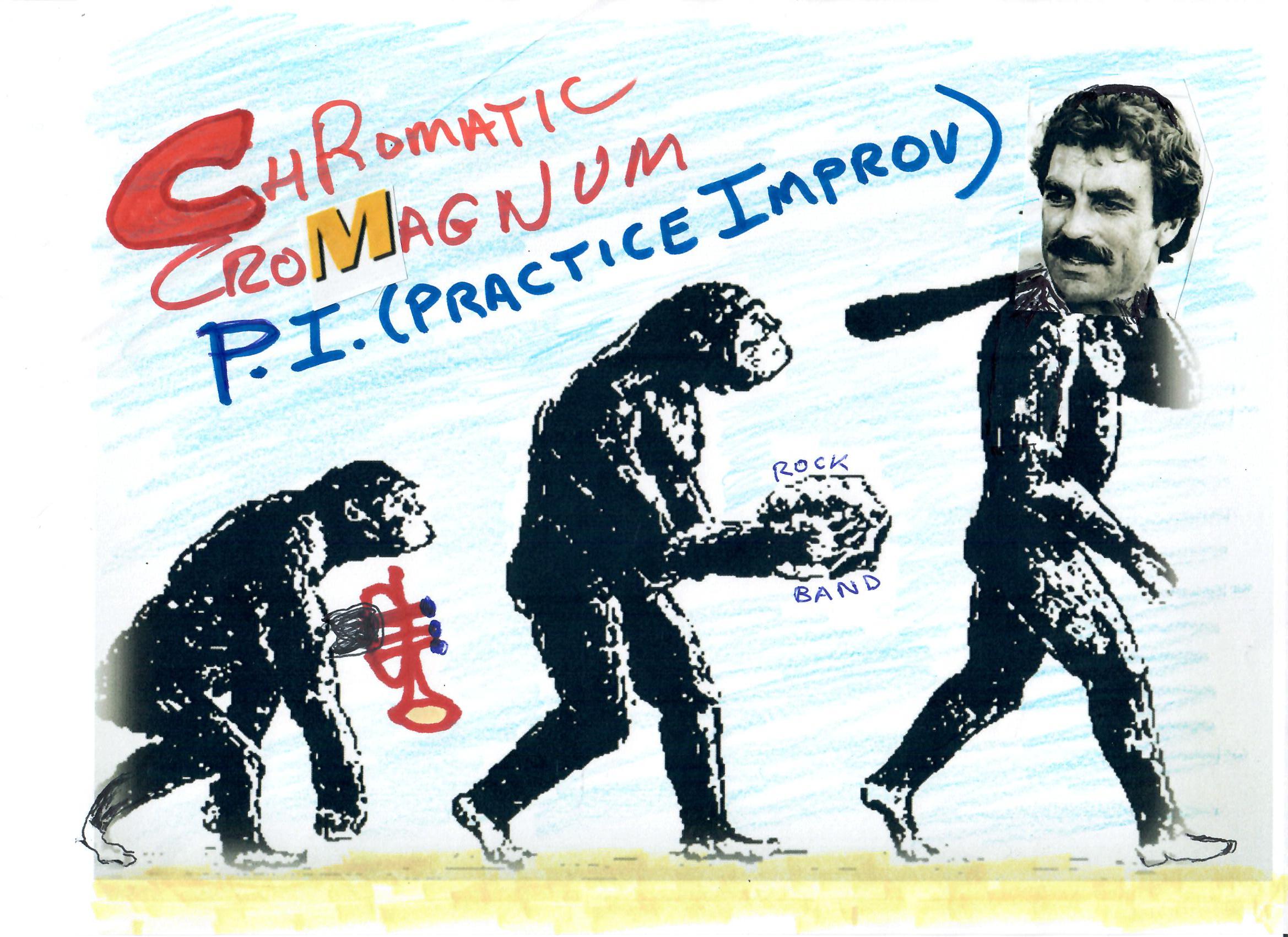 Ever feel totally drained after a big gig with no steam left to practice, like a malnourished Cro-Magnon? That’s how I felt this morning, after last night’s intense concert backing up my friend presenting 14 of his complex original compositions.
Ever feel totally drained after a big gig with no steam left to practice, like a malnourished Cro-Magnon? That’s how I felt this morning, after last night’s intense concert backing up my friend presenting 14 of his complex original compositions.
What’s a person to do? Well, “one foot in front of the other,” as the old saying goes. Just start blowing long tones; dig the sound of the horn, experience the feeling of wind on reed, fingers on pearls.
Here’s what emerged after an hour or so; a little chromatic meander that caught my imagination. As harmonized in this sketch, it forms a Dorian setting reminiscent of “So What,” “Little Sunflower,” “Jeanine,” or “Invitation.” It could also have been harmonized as a ii-V progression in C major modulating to D minor.

Click on “continue reading” below to see a chart and hear the recording in all 12 keys.
Continue reading “Chromatic Cro-Magnum P.I. (Practice Improv)”
Compose, Improvise, Practice: Three Birds, One Stone!
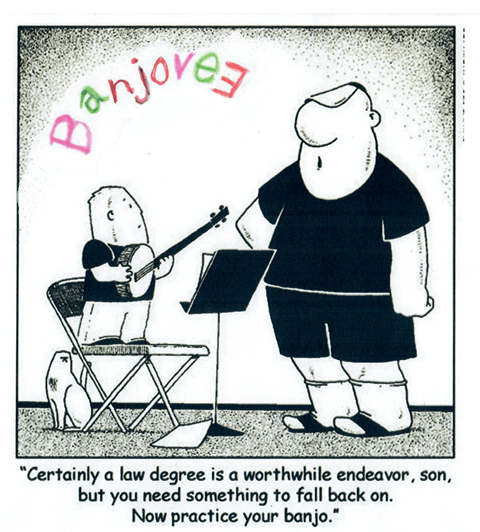
Do you ever NOT feel like practicing? If your go-to staple is a dry method book, you’ll probably answer “yes” – if you’re really honest.
On the other hand, if you dream of becoming an inventive improviser or an innovative composer, then read on!
Continue reading “Compose, Improvise, Practice: Three Birds, One Stone! “
Cantabile

It comes from growing up with James Brown, Sly Stone, and Tower of Power:
I prefer punchy, funky, accented articulation and short, clipped, syncopated rhythms.
But comes a time when smooth, cantabile phrasing is on the menu. So here goes.

If you want to woodshed this lick in all 12 keys, click “continue reading” below to see a complete chart, hear the complete recording @ 180 beats per minute (BPM) as well as a slower complete recording @ 100 BPM.
Where’s One?
When a novice improviser strays too far from the beat, the band often quips, “Where’s One?”, meaning “Are you lost?”
As improvisers, we seek fresh, innovative approaches which still retain the coherence needed to keep listeners’ interest. Sonny Rollins famously used “motivic development” to simultaneously add unity and variety to his improvisations.
Here is a melodic phrase which is then repeated verbatim. What makes the second statement of this phrase sound different from the first?

Notice the “rhythmic offset”: the initial statement of the theme begins on beat 3 (we’re in 12/8), while the second statement begins on beat 12. Jazz players call this “playing on the other side of the beat.” If your band mates are sufficiently skilled to avoid getting lost, playing on the other side can be used to stunning effect.
Note also that the second statement of our melodic phrase – while melodically identical to the first – is accompanied by chords from a different key. We might refer to this as a “transposed harmonic setting.” The new harmonies give the melody a distinctly different sound, as if stage lighting on an actor had been changed from red to blue.
Blues in Benny Carter’s Heart
 Benny Carter blessed us with an amazing solo on the 1938 recording of his composition “Blues in My Heart.” The entire performance is miraculous, but one four-bar passage in particular knocked me out, prompting me to shed that phrase in all 12 keys. Here’s the lick:
Benny Carter blessed us with an amazing solo on the 1938 recording of his composition “Blues in My Heart.” The entire performance is miraculous, but one four-bar passage in particular knocked me out, prompting me to shed that phrase in all 12 keys. Here’s the lick:
Benny’s rhythmic vitality propels the piece, his melodic contour is unique in all of jazz literature, his harmonic inventiveness is preposterously original, and his crystal clear tone is infectious. Here is my transcription of those amazing four bars.

Here is a slowed down recording of that phrase in all 12 keys:
If you want to play it yourself, click the “continue reading” button to see a complete chart.
Stan’s Stella Sequence

Yesterday, I discovered a sequence in Stan Getz’s 1952 Clef recording of “Stella by Starlight,” (MGC 137). The three-by-three format unfolds as Stan finishes the bridge on his first chorus. Here it is:

If you’ve studied “Stella,” you know that the final 8 bar section of the form contains the intriguing 6-bar harmonic sequence shown below:
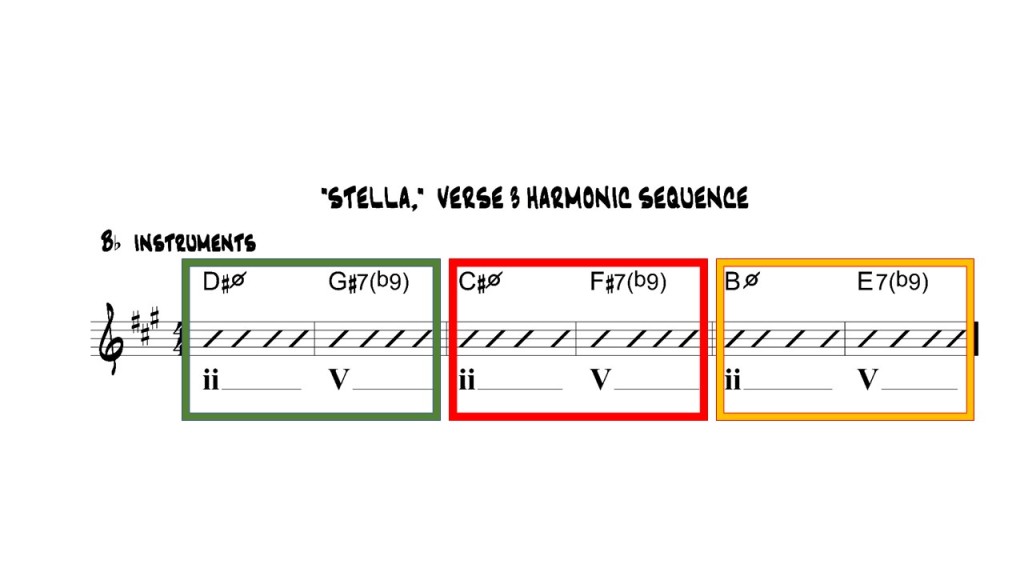
As shown here, that harmonic sequence features 3 iterations of 8 beats each, for a total of 24 beats. But Getz begins his amazing melodic sequence 2 beats before the passage shown above, so he needs to fill 26 beats.
The diagram below illustrates the incredible way he accomplishes this Herculean feat. Stan’s motif of six eighth-notes covers 3 beats and is repeated three times on each of three starting notes. But on the second iteration of round two, he leaves out a beat. Thus, the total episode comprises 9 + 8 + 9 = 26 beats. Even at 160 beats per minute, Getz is able to execute this monumental feat so smoothly that it sounds effortless.

Ben Webster’s “Mellow Tone”
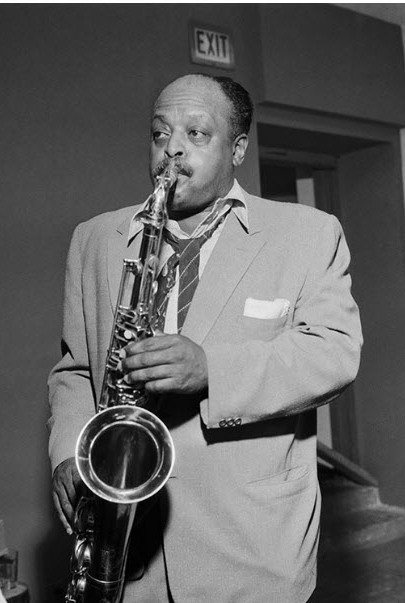
For a chart in all 12 keys, click on “continue reading” below. Or – if you want to learn to play effortlessly without charts, download “New Ears Resolution.”
Altoid Steroids
Reading an amazing article last night about alto legends Hodges, Carter, Bird, Cannonball, Stitt, and Desmond, i got this uncontrollable urge to practice alto. That’s unusual, as i generally grab a tenor or clarinet for wood shedding, but alto just felt right last night. Well, it takes a while to warm up to the alto sound, if you’re used to shedding on a different horn.
Do your ideas ever start to feel stale, like you need a musical Altoid to put the kick back in your licks?
Well, you ain’t alone, brother. So how do you punch through the clouds and fly up into blue sky?
I just hold up on one note, “fill the horn with air,” dig the way the horn feels, enjoy the sound – or maybe try several sounds – until “i start to feel much more like i do now than i did when i first got here.”
Well, that happened last night, and i want to share the resulting phrase with you. If you like how it sounds and want to try it on for size, click the “continue reading” button below to see a chart of the phrase in all 12 keys. If the chart looks gnarly, download “New Ears Resolution,” so you can play any melody in any key without a chart.
How Sonny Rollins Practices
How has the quarantine impacted your chops? This no-gigs lock down has been absolutely disastrous for many working musicians financially. But our chops don’t have to take the same hit our wallets are taking, if we’ll explore innovative approaches to practicing.
My practice strategy is similar to what Sonny Rollins described when asked how he practices. Sonny said:
“I start out playing things I know to get the blood flowing. Those things are often described as ‘clichés.’ You begin with the cliché so you can get the process in motion. Once the process is in motion, ‘thinking’ gives way to ‘playing.’ At that point, you get out of the way and let the music play.”
Over the past decade, I’ve written down over a thousand licks I keep in a notebook, each of which I woodshed in all 12 keys. Some of these ideas come from transcribed solos of the masters, but most simply emerge as I’m connecting with the horn. Practicing joy. I encourage you to try this technique, as it supercharges your chops, strengthens your improvisatory muscle, and turns you into a composer.
Here’s a lick you can play with, in order to get started down that path. The tonal center of this phrase baffled my friends and me at first. Eventually, I settled on a basic ii-V-I progression, which perfectly fit the melodic contour. If you want more background, leave a comment at the bottom of this post.
To see a chart, click on “CONTINUE READING” below.
RIPPING RIFFS OR MEMORABLE MELODIES?
 Craig wrote this article for the February, 2016 issue of Saxophone Life Magazine. It appears here courtesy of SLM.
Craig wrote this article for the February, 2016 issue of Saxophone Life Magazine. It appears here courtesy of SLM.
It’s definitely impressive to hear jazz musicians improvise at incredibly fast tempos. What is, however, far more inspiring is hearing how the great masters are able to create beautifully crafted, swinging melodic lines, regardless of tempo. Continue reading “RIPPING RIFFS OR MEMORABLE MELODIES?”
“Remember” Hank Mobley’s “Soul Station”?
 The road to dynamic, expressive improvisation is paved with practice and listening. Hank Mobley’s near perfect solo on Irving Berlin’s “Remember” from his classic LP “Soul Station” is filled with profound lessons on phrasing, rhythm, tone, melody, pacing, and development. Here is just one of the great ideas you will encounter when studying this wonderful recording.
The road to dynamic, expressive improvisation is paved with practice and listening. Hank Mobley’s near perfect solo on Irving Berlin’s “Remember” from his classic LP “Soul Station” is filled with profound lessons on phrasing, rhythm, tone, melody, pacing, and development. Here is just one of the great ideas you will encounter when studying this wonderful recording.
 As always, we recommend learning the phrase in all 12 keys. Practice with the audio file found below. Continue reading ““Remember” Hank Mobley’s “Soul Station”?”
As always, we recommend learning the phrase in all 12 keys. Practice with the audio file found below. Continue reading ““Remember” Hank Mobley’s “Soul Station”?”
Jazz Articulation, Accents, and Proper Tonguing
Some saxophone & clarinet students have difficulty with jazz articulation, because they have not learned to tongue properly. They begin each note with a constriction in the throat, which sounds as if the student were humming into the mouthpiece. The beginning of the note is fuzzy and indistinct. Continue reading “Jazz Articulation, Accents, and Proper Tonguing”
Why Is This Tune So Hard To Memorize?
Have you ever had difficulty playing a tune, even though it presented no obvious technical hurdles? Perhaps the problem lies in a hidden harmonic riddle, which, when solved, will unlock your understanding of the song and make it easier to play and to remember.
At a recent gig, pianist Mark Schecter called off Dizzy Gillespie’s “Groovin’ High.” Although Storyville used to play the song, it still made me stumble. However, after deciphering its harmonic implications, playing it became simple.
Here’s how to solve a riddle like that.
How to Learn Songs
Is there a more effective, efficient method for learning and retaining a large repertoire of jazz standards? Continue reading “How to Learn Songs”
Thematic Development Galvanizes Your Solos
 Do your solos brim with vitality, gliding across a colorful landscape, as you explore ever deeper into the ocean of sound? Or do you flounder among waves of notes, swimming through a maze of chord changes?
Do your solos brim with vitality, gliding across a colorful landscape, as you explore ever deeper into the ocean of sound? Or do you flounder among waves of notes, swimming through a maze of chord changes?
 Thematic development will transform your playing, as you weave your exciting, personal story.
Thematic development will transform your playing, as you weave your exciting, personal story.
The following clips illustrate three powerful tools to stimulate your creative potential and enthuse your audience.
1. RHYTHMIC SHIFT – Example 1 presents a 7-beat phrase that starts on the “and” of beat 3. The phrase is then repeated, but this time, it begins on the “and” of beat 2. Repeating the phrase gives your thought unity, while the rhythmic offset offers variety and surprise. Try playing along with this recording in all 12 keys.
2. DIMINUTION – In example 2, the 7-beat phrase is the same, but a triplet compresses the second statement of the theme. Your motif is still easily recognized, but you have added variety.
3. TONAL SHIFT – In Example 3, the second statement of the theme modulates up a minor third. Tonal shift was a favorite device of John Coltrane. The listener still recognizes your theme, but her ear delights in this fresh new element you have added to the mix.
As you become more comfortable with creating and developing thematic material, your unique personality defines your individual style. You improvise dynamically and coherently.
To master these 3 techniques, play along with the 3 audio files offered here. Contact me, if you need a chart. Or, if you want to learn to play by ear in all 12 keys (as I did while recording these clips), download “New Ears Resolution” and liberate your musical imagination!
Do You Enjoy Practicing Scales?
How often do we teachers hear students complain about having to practice long tones and scales? Every teacher knows that long tones greatly enhance tonal quality and intonation and that scales are the raw material from which improvised solos are crafted. The problem is that any musician who practices being bored will bore the audience. What you practice is what you perform. Practice joy, imagination, and freshness, and your show will be fresh. Practice dry technique, and your gig will be a desert.
Below is a 4-bar phrase containing a descending major scale (Ionian mode) and an ascending Mixolydian mode. I worked on this exercise until the rhythm and note sequence started to feel interesting to me.
Try playing along with the background track provided below and see if this approach adds a bit of zest to your practice time. Develop your own variations on this idea. Email me for a FREE copy of this exercise in all 12 keys, if you have trouble figuring it out. Better yet, download “New Ears Resolution” and learn how to play any melody in any key by ear.
Check Out This Great Saxophone Web Site
Jeff Rzepiela is a talented reed player and arranger. His web site contains many transcriptions of solos by the masters of jazz. Check out his latest newsletter Scooby-sax_Newsletter_Oct_2014(1) which features an insightful analysis of an improvised solo by Arnie Krakowsky over the tune “I’ve Never Been in Love Before.” Jeff skillfully singles out several key phrases in the solo, shows how they relate to each other, and makes them available for those of us who benefit from “wood-shedding” over great “licks.”
A Jazz Lick From Bach? Yes Indeed!
A recent biography of jazz tenor sax giant John Coltrane verified that he had indeed studied the wonderful Bach Cello Suites. The suites, though quite challenging, are a joy to play, and they provide numerous opportunities to build your tone, technique, and conception. As it turns out, they also contain some amazing phrases which can be adapted as jazz improv “licks.” What do you think of this one? It’s from Bach Cello Suite Number 2, “Allemande,” bar 21. Play it through in all 12 keys (see chart below) and let us know whether Bach gives you ideas for your jazz improvisation.
Cannonball Adderley: The Way You Look Tonight
Cannonball Adderley’s solo on “The Way You Look Tonight” is an amazing tourdeforce! He blazes through an entire chorus in 53 seconds. But, if you play this solo** at half speed, it is as melodic as a Johnny Hodges invention. Played in concert F, it is written for alto sax in D major. In this key, the bridge modulates to F major. However, the wonderful phrase shown below actually begins in G minor and ends in F major. Try playing this lick in all 12 keys. It works well over a II-V change. If you cannot figure it out on your own, email me for a free chart of the lick in all 12 keys. 
** This solo is found in “The Julian Cannonball Adderley Collection” edited by Tim Price, published by Hal Leonard.




